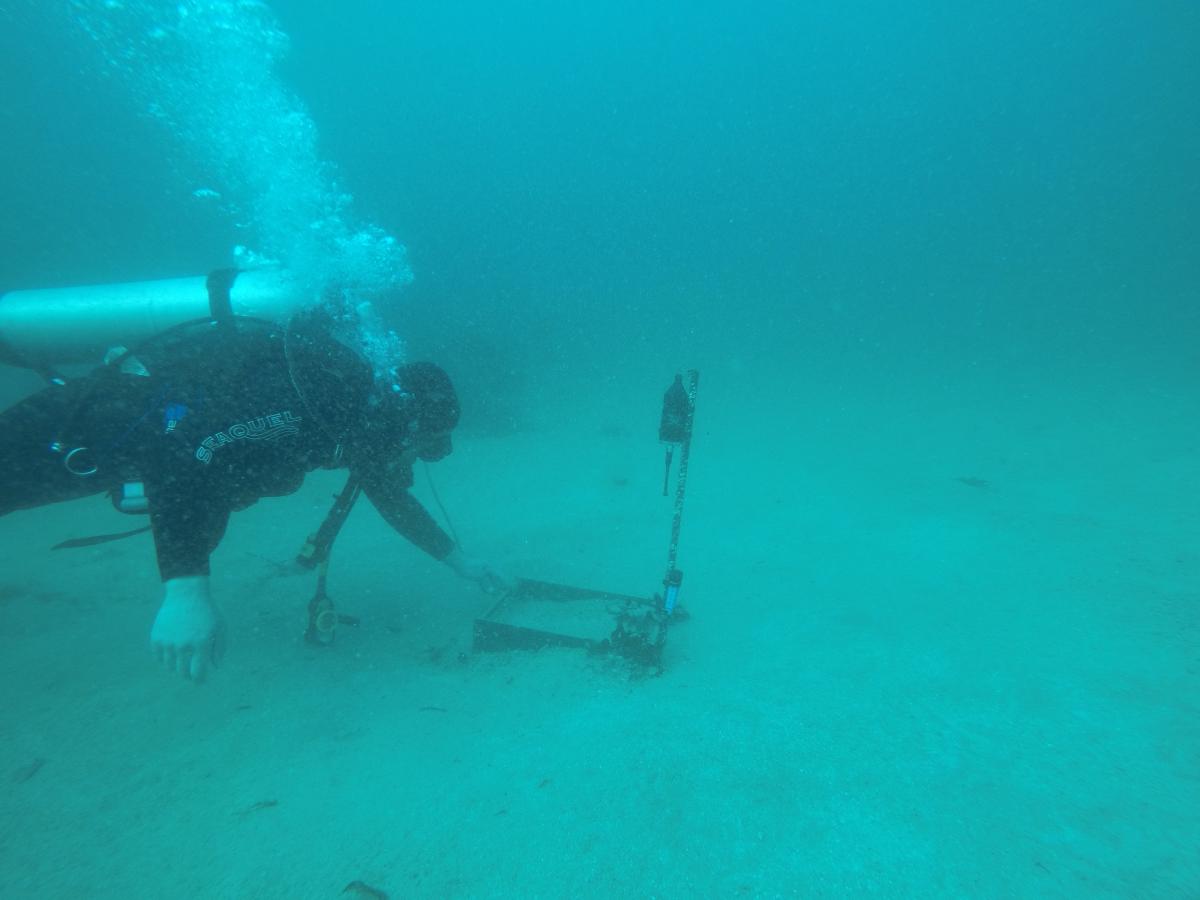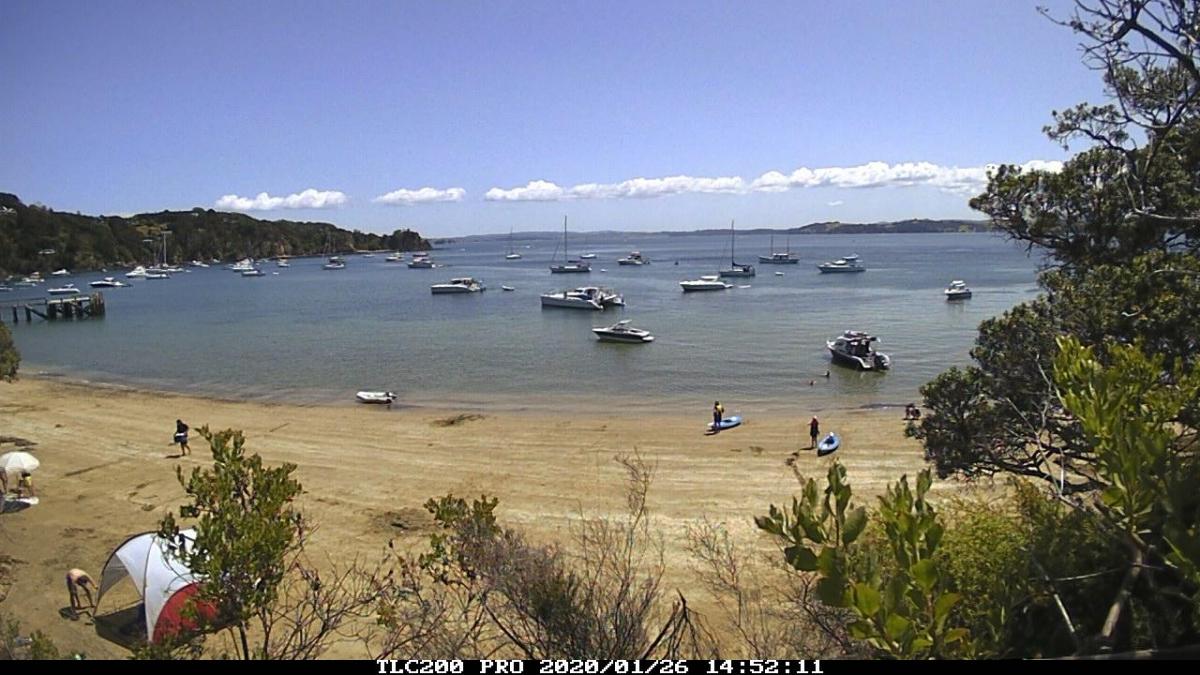Published online: December 2021
Synthesis by: Louise Wilson; Leigh Marine Research Laboratory, The University of Auckland (Twitter: @louwheeez)

An acoustic receiver deployed on the seabed.
Sound is an important communication channel for many species living in environments where visibility is often low. Underwater, sound travels four to five times faster than in air and is used by invertebrates, fish, and mammals to carry out essential behaviours such as navigation, mating, and shoaling. Sound can also facilitate the detection of prey and the avoidance of predators. However, sound pollution can mask these cues, impacting the ability of individuals to transmit and receive information and affecting important life history functions. For example, research in British Columbia has found that sound from human sources elevates sound pressure levels within rockfish conservation areas, overlapping with the frequency band at which these fish vocalize. These vocalizations are thought to play a role in spawning and so masking of these cues has clear implications for this overharvested species. For the most part, our understanding of how sound pollution affects marine animals is limited, with most of the existing research being focused on the impacts of large commercial vessels in the open ocean. The extent to which small recreational boats contribute to sound pollution has only just started to get more attention.
45 % of New Zealanders identify themselves as recreational boaties, representing 1.67 million people, the majority of which (36 %) go boating in the Auckland/Tāmaki Makaurau region. Recreational boating activity is similarly high in other coastal areas worldwide and may be expected to continue to rise in a post COVID-19 world where people look to holiday locally. The small size of these boats allows them to come into close proximity with the animals which use coastal habitats, many of which are site-attached and unable to move to evade stress. Since these habitats are highly productive, and often the site of marine protected areas (MPAs), understanding the threats they face is crucial for effective monitoring and mitigation. Although we know boating is a popular activity in coastal areas, we don’t know how sound from these boats impacts the soundscape of these habitats, or how levels of boat sound vary throughout the day and year.

A typical day at a popular boating site during summertime in Aotearoa.
The COVID-19 pandemic provided a unique opportunity to investigate levels of ambient sound in the ocean in the absence of small boats, which were prohibited from operating during Aotearoa/New Zealand’s strict lockdown from 26th March – 14th May 2020. Acoustic receivers deployed before and during lockdown demonstrated that the range over which dolphins and fish were able to communicate increased by up to 510m (20%) and 13m (31%), highlighting the significant communication masking caused by small boats. Current research at the University of Auckland’s Leigh Marine Lab is building on this work to investigate how levels of boat sound vary daily and seasonally at different coastal sites in Tīkapa Moana, by focusing on MPAs and popular recreational sites.
Establishing the levels of sound at these sites, both in the absence and presence of boats, will provide useful baselines for monitoring and regulation of boat sound at similar sites nationwide. Unlike chemical and plastic pollutants, sound pollution is easy to remedy by removing boat traffic from defined areas such as MPAs (although a buffer zone may be necessary), and effects can also be mitigated by slowing boats or improving boat design. However, more focused research is needed looking at how this stressor varies over space and time, and the degree to which it affects commercially and ecologically important species.
Relevant literature:
Davenport, J. and Davenport, J.L. 2006. The impact of tourism and personal leisure transport on coastal environments: A review. Estuarine, Coastal and Shelf Science, 67:280–292. https://doi.org/10.1016/j.ecss.2005.11.026
Ebdon, P., Riekkola, L. and Constantine R. 2020. Testing the efficacy of ship strike mitigation for whales in the Hauraki Gulf, New Zealand. Ocean and Coastal Management 184:105034. https://doi.org/10.1016/j.ocecoaman.2019.105034
Martitime New Zealand. 2020. 2020 Regional Recreational Boating Summary. https://www.maritimenz.govt.nz/recreational/documents/2020-recreational…
Nikolich, K., Halliday, W.D., Pine M.K., Cox, K., Black, M., Morris, C. and Juanes F. 2021. The sources and prevalence of anthropogenic noise in Rockfish Conservation Areas with implications for marine reserve planning. Marine Pollution Bulletin 164:112017. https://doi.org/10.1016/j.marpolbul.2021.112017
Pine, M.K., Wilson L., Jeffs, A.G, McWhinnie, L., Juanes F., Sceuderi, A. and Radford C. 2021. A Gulf in lockdown: How an enforced ban on recreational vessels increased dolphin and fish communication ranges. Global Change Biology 27:4839–4848. https://doi.org/10.1111/gcb.15798
